There used to be only four types of camping tents: dome, teepee, A-frame, and tunnel tents. Tent design has come a long way over the past few decades though. Now, we can break down tents into 10 different types based on their shape or setup.
It’s actually very important to know about these different types of tents because some are much better suited for certain types of camping – like some shapes of tent being able to withstand bad weather better or certain tents having more interior space for large families.
Below are the 10 main types of camping tents with photos, the pros and cons of each tent type, and what they are best for.
1. Dome Tents
Best For: Car camping or backpacking, all weather conditions
Dome tents consist of two poles which cross over each other to make the tent structure. The ends of the poles go into the tent’s floor (or ground sheet). This creates a free-standing structure which doesn’t need guylines or stakes to stay up. A waterproof layer can go on top of this. They are very easy and quick to set up.
The dome shape of the tent means wind can move over the tent easily. Water will also fall off the tent instead of pooling on the top, so dome tents are great for bad weather. Dome tents come in all sizes but larger dome tents don’t do as well in bad weather though.
The downside of the dome shape is that the walls are curved. Thus, the ceiling height will be low in many parts of the tent.
Pros:
- Freestanding
- Easy setup
- Only two poles
- Good in wind and rain
- Many sizes
- Single or double layer
Cons:
- Limited interior space
- Larger sizes aren’t as good in bad weather
- No or small vestibule
2. Extended/Modified Dome Tents
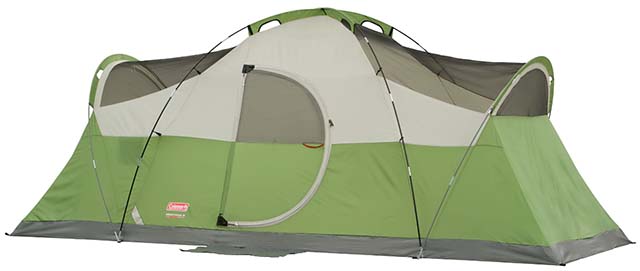
Dome tent extended to create more room (Coleman Montana tent)
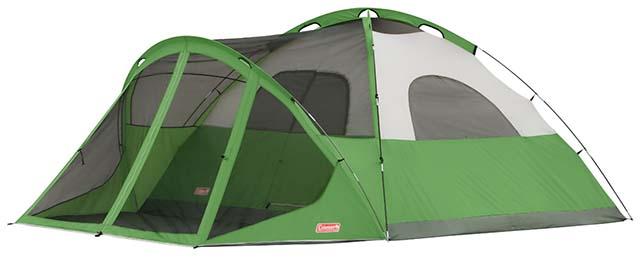
Dome tent extended to have a front patio area (Coleman Evanston tent)
Best For: Car camping or backpacking, usually 3-season conditions
Extended dome tents use the criss-crossing pole design but they also have a curved pole (or poles) which extend off to the size. This pole is often used to create a vestibule space in front of the tent.
Two curved poles can also be added to each side of the dome to create a larger tent or even additional rooms. The extended area is slanted though, so doesn’t give much extra interior space with headroom.
The curved pole does need to be staked down, so the tent is only semi-freestanding. However, it is still fairly easy to set up. The design gives you much more space and versatility while still maintaining the benefits of a sturdy dome design.
Pros:
- Semi-Freestanding
- Easy setup
- Good in bad weather
- Extra space or vestibule
- Some have additional rooms
- Single or double layer
Cons:
- Larger sizes aren’t as good in bad weather
- Extended area has slanting roof
3. Tunnel Tents
Best For: Car camping in mild weather
Tunnel tents are made up of two or more curved poles connected by the tent fabric. The pole design creates a tunnel which has consistent overhead height. Some tunnel tents have large storage areas in the middle with multiple rooms off to the side.
In theory, there is no limit to how many poles a tunnel tent can have, so they come in many different sizes. However, the design doesn’t usually make sense for more than 6 people. With 6, you can have a patio in the middle and 3 people sleeping on each side. For more campers than this, you’d have to cram people into the end of the tunnel, meaning they would have to crawl over the other campers to get in/out.
Assembling tunnel tents is usually pretty easy. However, they are not freestanding and must be staked out. This makes tunnel tents a bad choice for rocky ground or sandy soil. You also have to be careful not to trip on the many guylines.
It’s important to pay attention to wind direction when setting up a tunnel tent. If the wind hits the tunnel straight-on, it can easily cause the tunnel to blow away. Thus, tunnel tents aren’t recommended for windy weather.
Pros:
- Can have multiple rooms
- Lots of storage space
- Good headroom
- Multiple layouts
Cons:
- Not freestanding
- Not good for windy weather
- Lots of guylines = tripping hazard
4.Cabin Tents
Best For: Family car camping or group camping
These tents have vertical or near vertical walls, so they resemble a cabin when set up. The vertical walls mean the interior of the tent is very spacious and you have lots of headroom. They are great for people who don’t want to hunch over in the tent or want to use a cot bed inside the tent
Cabin tents come in various sizes, including sizes for large families and groups. They sometimes have room dividers or even multiple rooms.
The downside of cabin tents is that they are very big and bulky. The huge footprint means you can’t pitch them just anywhere. Pitching can be a pain too and usually requires multiple people. They aren’t freestanding and have to be carefully staked out with guylines. You’ll probably need to bring a hammer to ensure the guylines are secure.
Cabin tents are also not great against high winds. Because most cabin tents are just one-layer, condensation can build up inside the tent and drip water on you while you sleep. Because of these issues, cabin tents are mostly recommended for mild weather camping.
Pros:
- Spacious
- Lots of headroom
Cons:
- Huge footprint
- Heavy and bulky
- Not great in bad weather
- Lots of guylines= tripping hazard
5.Geodesic or Semi-Geodesic Tents
Best For: Expeditions, camping in winter or bad weather
Geodesic tents consist of multiple poles which overlap each other. The overlapping tent construction creates a very stable structure. They are almost always freestanding. Geodesic tents are also usually a round shape as this allows rain, wind, and snow to go over the tent. However, there are some other shapes of geodesic tents as well.
The only real downside of geodesic tents is that they can be hard to set up. It’s easy to get confused as to where the criss-crossing poles go.
Pros:
- Freestanding
- Very sturdy
- Withstands very bad weather
- Suitable for winter camping
Cons:
- Not many options
- Tend to be pricy
- Difficult to pitch
6. Rooftop Tents
Best For: Road trips
Rooftop tents are installed on top of your vehicle. Depending on the type, you unfold, inflate, or pop-up the tent when you want to use it. You use a ladder to climb into the tent.
While mounting the tent to your car can be a pain, pitching rooftop tents is generally quick and easy. You don’t have to worry about uneven ground or staking out the tent. You can camp anywhere that you can park your vehicle.
Rooftop tents aren’t for everyone though. Small children or uneasy sleepers can fall out of rooftop tents. They perform poorly in wind. You’ve got to empty the tent and fold it away if you want to drive anywhere. Most rooftop tents are also pretty pricy.
Pros:
- Freestanding or semi-freestanding
- Can camp anywhere you can park
- Flat sleeping surface
- Quick and easy pitching
Cons:
- Need to be mounted
- Expensive
- Falling risk
- Need to climb into the tent
- Bad in windy weather
- Expensive
7. Popup Tents
Best For: Beach camping, festivals
Popup tents usually have one or two poles which are built into the tent fabric. The poles are flexible and keep coiled up. When you uncoil the tent, it pops into shape.
While popup tents are ridiculously easy to set up, they have numerous downsides. The main one is that they are unstable and will often even blow away in light winds. Because they only have one layer, condensation is a huge problem with them. They are also huge discs when stored and annoying to carry. Because of these downsides, they only really make sense if you are beach camping in nice weather or for festivals. Read more about why you shouldn’t buy popup tents.
Pros:
- Quick and easy setup
Cons:
- Easily blow away
- One layer
- Prone to condensation
- Lack features like storage
8. Bivy Sacks
Best For: Ultralight backpacking, bike touring
Bivy sacks (also called bivouac shelter, bivvy or bivi) are one-person minimalist shelters. Some very simply bivy sacks are akin to waterproof bags with breathing holes. Other types of bivy sacks use one or two hoops. The hoops create a dome which keeps the bivy sack material off your body, which makes the bivy more comfortable to use.
These shelters are incredibly lightweight, compact, and quick to set up. This makes them popular for bike touring and ultralight backpacking (see these affordable ultralight tents).
Breathability in bivy sacks is very bad. When completely zipped up, condensation is almost inevitable. You also can’t store much gear inside a bivy sack. To solve these issues, a lot of people use bivy bags with a tarp shelter. The tarp shelters gear and allows you to keep the bivy sack unzipped even in bad weather.
Pros:
- Fast and easy setup
- Lightweight
Cons:
- Condensation
- No storage space
- Claustrophobic
9. Teepee/Pyramid Tents
Best For: Ultralight backpacking
These simple tents consist of one pole in the center. The tent fabric (or tarp) goes over the pole and is staked out at the corners. The benefit of having only one pole is that the tent becomes very lightweight. Some pyramid tents can even be pithed with trekking poles. See these best trekking pole tents.
However, outside of the ultralight backpacking community, pyramid tents are not at all popular. The center pole makes for an awkward sleeping area. The walls are very slanted, so the interior space is limited. They are also very unstable and often need lots of guylines. With just one layer, pyramid tents are prone to condensation.
Pros:
- Lightweight
- Can use trekking pole to pitch
Cons:
- Unstable
- Pole in middle of tent
- Slanted tent walls
- Very limited interior space
- Often have condensation issues
10. A-Frame/Ridge Tents
Best For: Ultralight backpacking
These are the tent design that you might see in cowboy movies. The construction involves at least two poles to support the front and back of the tent. These poles are often connected by a center ridgeline pole. The design means you have slanted walls. While more spacious than a pyramid tent, you still don’t get much headroom.
Ridge tents are usually one-layer so condensation often occurs. They are somewhat difficult to pitch and sagging walls are almost inevitable. This means that rain or snow will pool on tent walls. Most basic designs don’t handle wind very well either.
Because of all of these issues, A-frame tents are rarely used anymore. The exception is with ultralight backpackers who use A-frame designs for tarp shelters. There are also some ultralight trekking pole tents which use the A-frame design.
Also read: Best Ultralight Trekking Pole Tents
Pros:
- Some ultralight designs
- Can use trekking poles to pitch
Cons:
- Not freestanding
- Hard to pitch
- Slanting walls
- Limited headroom
- Condensation
Pin this!


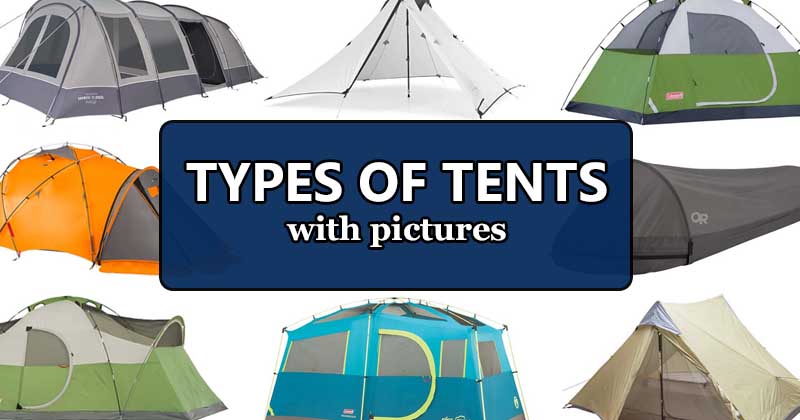
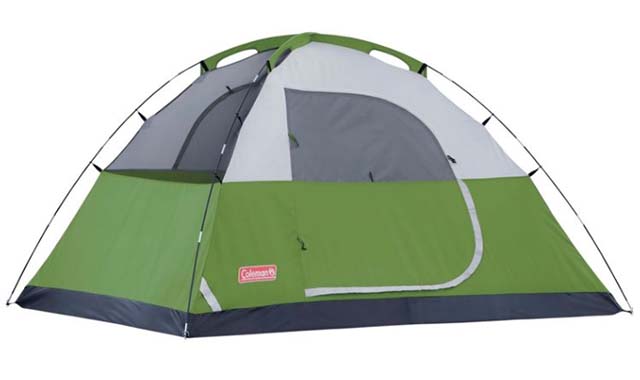
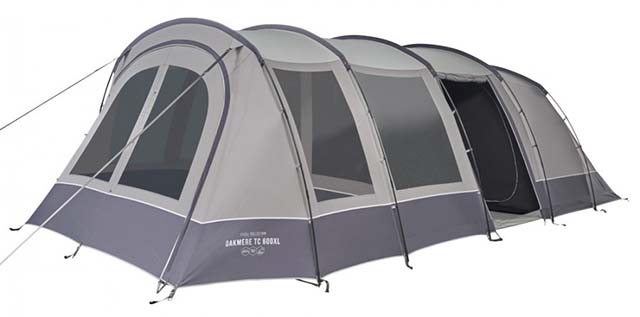
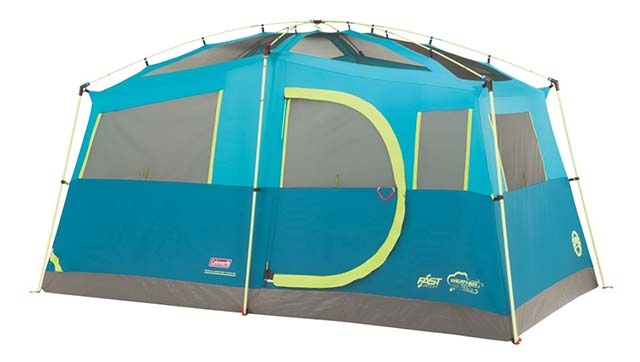
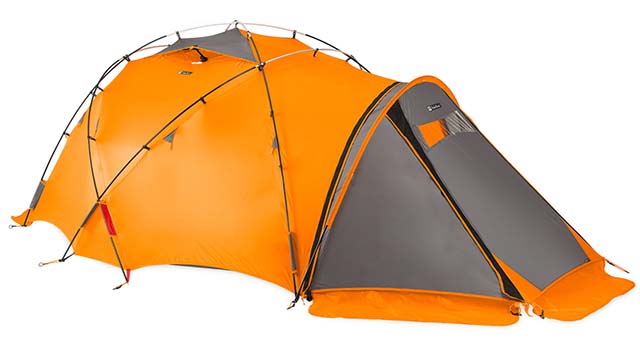
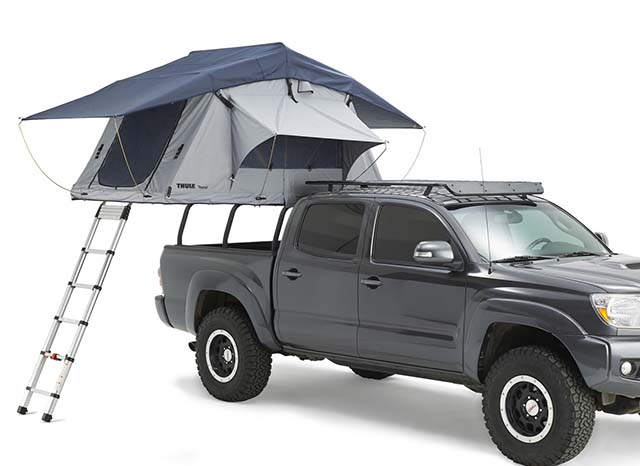
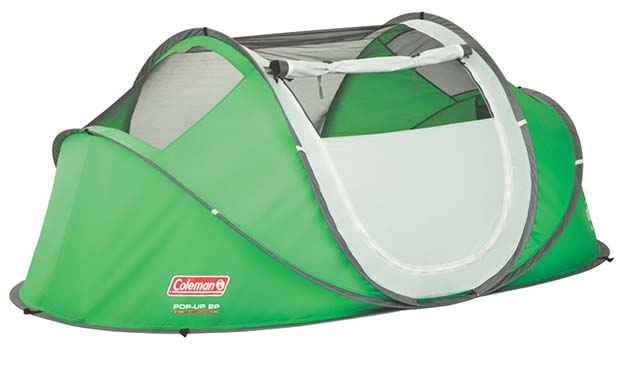
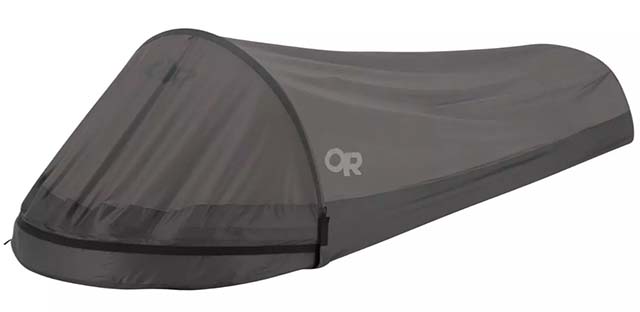
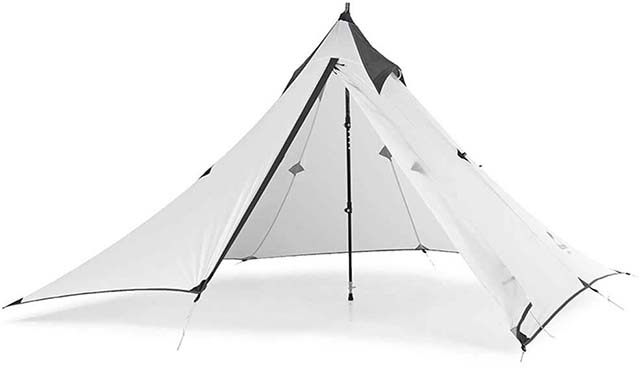
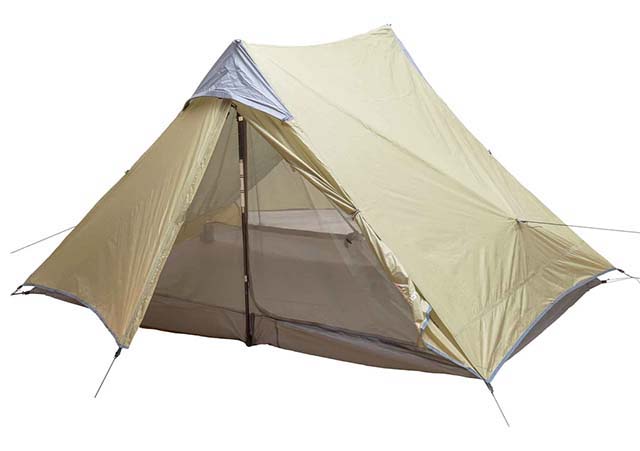
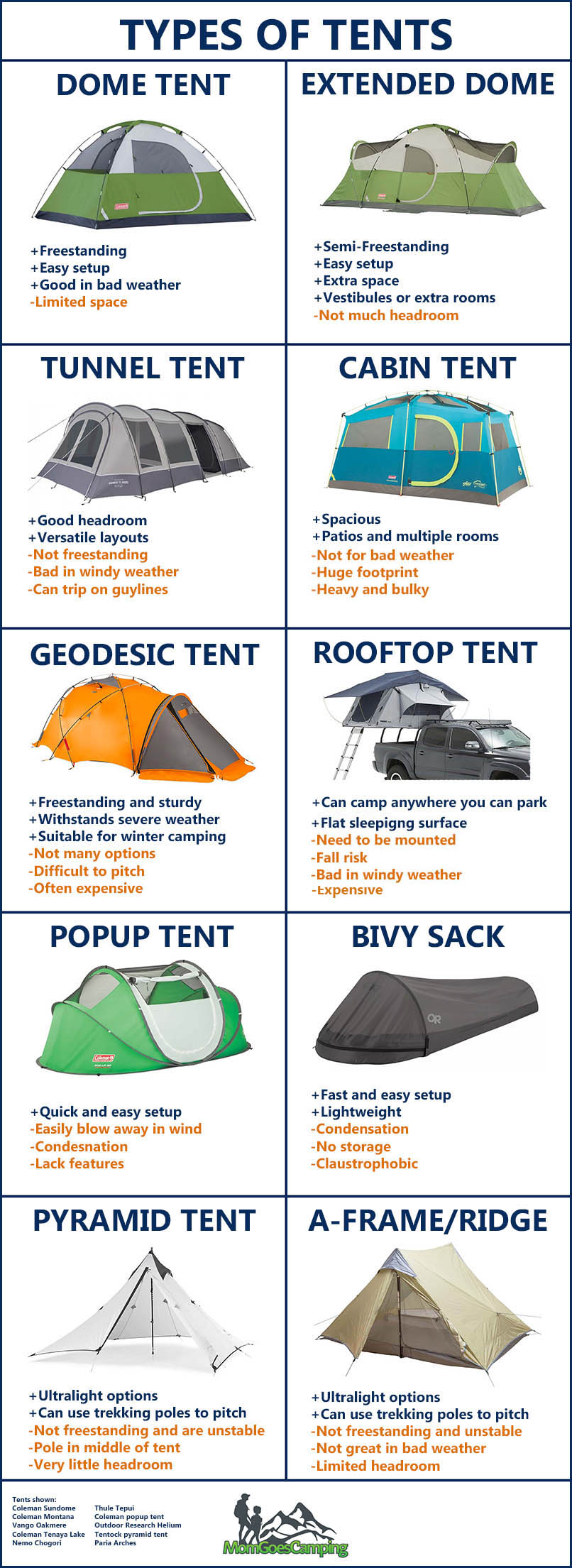
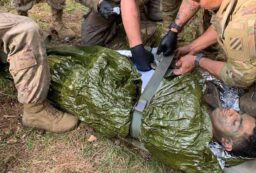
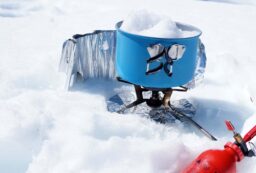
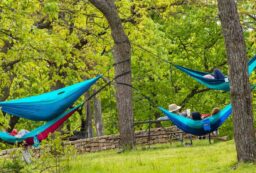







4 Comments
Meor Muhammad Afif
November 10, 2021 at 5:00 amthank you for your website i can use it as reference for my assignment. I also can use this knowledge for the future if i want to have outdoor adventure.
Carl
December 30, 2021 at 6:52 pmYou didn’t mention anything about ‘spring bar’ tents, such as the Kodiak Canvas. https://images.app.goo.gl/arBWVFqTVjUZFDWs8
Diane
December 31, 2021 at 3:49 pmI’d put those in the same general category as cabin tents, though some do have different pole designs which would put them closer to a different type of tent.
Karto
September 18, 2022 at 4:03 pmI’ve used tunnel tents hit side-on by 100 kph winds, without the least issue, several times. Tunnel tents are very capable in bad weather, when compared with similarly well constructed domes. What they’re not as good for is sustaining snow loads.